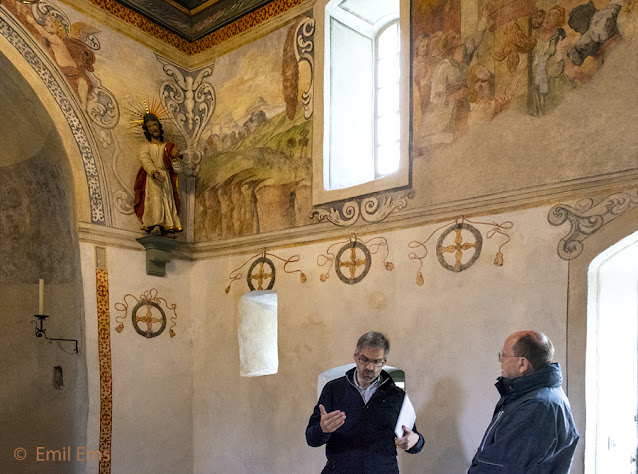WHERE IT ALL BEGAN

s Interior of Chaplutta Sogn Pieder Three brothers Ems have taken a voyage back in time. It is the year 800 AD, precisely when our Sovereign, Charles King of the Franks, is being crowned Emperor in Rome. We are standing in a newly built chapel, or "Chaplutta" – as our monstrator (guide) calls it. This little marvel of a building is situated on a small hill overlooking the Rhenus Alpense (Alpine Rhine), some 2,7 milliarii (4 km) upstream from Curia Raetorum (Chur). The monstrator explains all this to us in Latin with a very strange accent, which I barely understand, despite being fluent in the language since my study days in Vienna. As he tells us further, just 35 years earlier, a monk was sitting in the scriptorium of Episcopi Vitto's residentia in Curia Raetorum (Chur), taking care to sharpen his goose feather, tip it in a small pot of ink made of gall nut, vitriol and wine, and painfully printing five minuscule letters on a parchment containing a numerous


